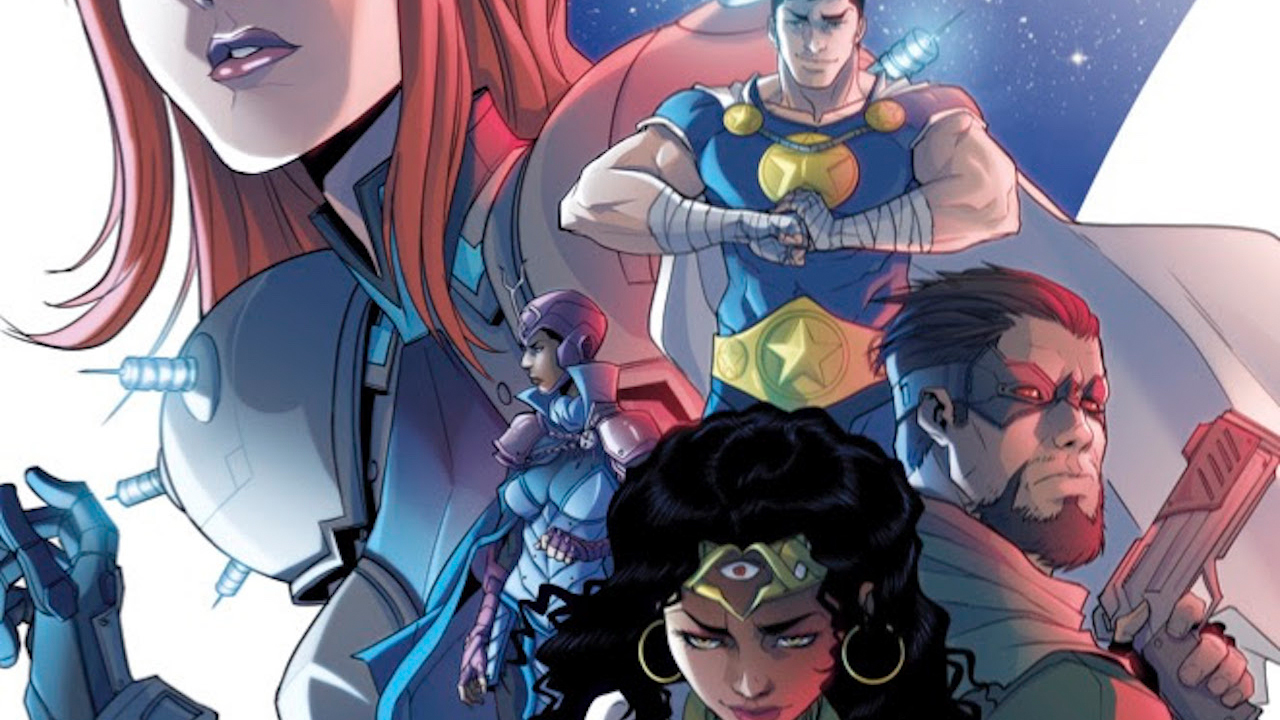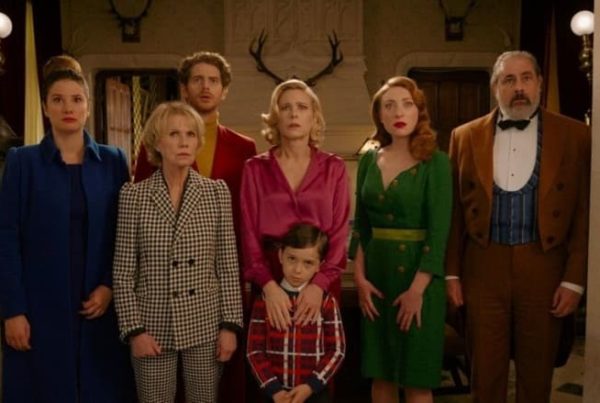The stated intent of Image’s new superhero series Commanders in Crisis is to do a massive crossover event in a brand new fictional universe, trusting that the reader’s understanding of cape genre tropes and archetypes will do the heavy lifting that familiarity with established characters in, say, Crisis on Infinite Earths or Secret Wars normally does. Well, that’s nothing if not ambitious, and based on the first two issues provided for review, writer Steve Orlando (Wonder Woman, Martian Manhunter) and artist Davide Tinto (Marvel Action: Spiderman) may have just about pulled it off.
Our heroes are the Crisis Command: five heroes who have banded together ala the Justice League and the Avengers to battle evil, save lives, and whatnot. Except that’s only the cover story; they’re really each the sole survivor of a now-destroyed alternate Earth and, what’s more, they were each the U.S. President in their own dimension. Shall we do a roll call just to speed things up? Okay.
 Prizefighter, whose strength grows with the encouragement of his audience, was his America’s first gay president.
Prizefighter, whose strength grows with the encouragement of his audience, was his America’s first gay president.
Originator, who effectively casts spells by inventing new words, was her America’s first Pakistani, woman president.
Sawbones, whose power to perceive the deep structures and workings of the human body makes him an “action surgeon, was the first Hispanic president.
Seer, whose quantum-based powers are really a bit bloody nebulous, was the first Black, woman President.
And Frontier, a good old-fashioned super scientist, the first woman President of her America, which is our America in the series. It’s Frontier who has rescued the other four from the destruction of their homeworlds, in the hopes that they can avert the catastrophe if and when it occurs here.
Which, of course, it does. The concept being played with is labeled “cosmic sepsis” – the idea that a world can become so toxic and broken that the multiverse basically ejects it from existence like a splinter out of a pus-filled wound. As the series opens we see that that the political situation is, if anything, more fraught than hours, with a law labeled the American Individuality Act poised to change the U.S. from a cohesive nation to a coalition of 50 individual nation states. While Frontier has brought the Crisis Command together to confront disaster, this seeks to rend the U.S. apart – collectivism vs individualism wrought in four colour superhero action.
But that’s background. The main thrust of the plot thus far is a good, old-fashioned murder mystery, which takes a turn for the cosmic when a John Doe body turns out to have been imbued with the concept of empathy and then killed, effectively killing humanity’s capacity to feel for others. Could this be the first step on the road to the apocalypse?
 Commanders in Crisis plays its cards close to its chest as a good mystery must, but so far it’s a good time, delivering big ideas and concepts with bright energy and a moving things along at rapid clip. Tinto’s cartoony, almost manga-esque art style is perfectly suited to the material, eschewing the “realistic” trend to instead cleave to archetypal designs and exaggerated expressions and poses that set the series firmly in the old school heroic tradition. This is nicely balanced and complemented by Orlando’s deliberately and unapologetically inclusive and political writing, which makes no bones about presenting a team populated with points of identification for as wide an audience as possible, and commenting on real world American politics along the way.
Commanders in Crisis plays its cards close to its chest as a good mystery must, but so far it’s a good time, delivering big ideas and concepts with bright energy and a moving things along at rapid clip. Tinto’s cartoony, almost manga-esque art style is perfectly suited to the material, eschewing the “realistic” trend to instead cleave to archetypal designs and exaggerated expressions and poses that set the series firmly in the old school heroic tradition. This is nicely balanced and complemented by Orlando’s deliberately and unapologetically inclusive and political writing, which makes no bones about presenting a team populated with points of identification for as wide an audience as possible, and commenting on real world American politics along the way.
Will it pay off? All signs point to yes, and the initial 12 issue run should afford the creators plenty of room to explore their characters and world, and pack in that widescreen action that superhero books can do so well. If you’re a cape fan but a bit gunshy about jumping into the increasingly convoluted Marvel and DC universes, this one is tailor made for you.




